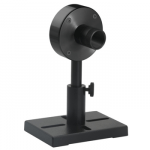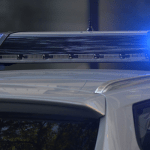It probably wouldn’t surprise you that lasers, which can cut and weld metal sheets, have safety regulations.
Lasers are used for many different applications and come in a large variety of powers and parameters, so it wouldn’t be fair (or logical) to require the same sort of safety measures for industrial laser welders as laser pointers or barcode scanners.
That’s why if you look at any laser safety regulation, you will see that they first define various thresholds or levels. The revised version is something like this:
- Class 1: Safe
- Class 1M: Safe, unless using magnifying equipment
- Class 2: Safe, as long as you blink normally
- Class 2M: Safe, as long as you blink normally and don’t use magnifying equipment
- Class 3R: Safe, if used carefully with some restrictions
- Class 3B: Not safe, unless viewing a diffuse reflection
- Class 4: Not safe
The regulatory standards describe particular instructions for how to measure your laser to determine which class it falls into. This is mainly based on power, but also could be a function of whether the beam is CW or pulsed, its wavelength, divergence, etc. You might also need to measure only power through an aperture to simulate the diameter of the eye’s pupil (3.5 mm during the day, 7 mm at night).
How to Measure Lasers for Safety Classification
You should always consult a laser safety professional to make or assist you with these measurements. That said, here are the tools of the trade that you may need, depending on what you are measuring:
- For collimated beams, use a photodiode or thermal power sensor, depending on your laser power. Use our sensor finder if you need help getting the best suited sensor.
- For diverging beams, use an integrating sphere. (You can also use the integrating sphere’s additional ports to measure pulse characteristics, wavelength, etc.)
- For scanned beams, use our special BC20 sensor
- For power through aperture measurement, look at the PD300-CDRH-3.5mm or PD300-CDRH-7mm accessory for our PD300 line of photodiode sensors.
If you’re not sure where to go or what to do, don’t despair! Contact one of our friendly laser measurement experts here.












Leave a Reply
Your email address will not be published. Required fields are marked *